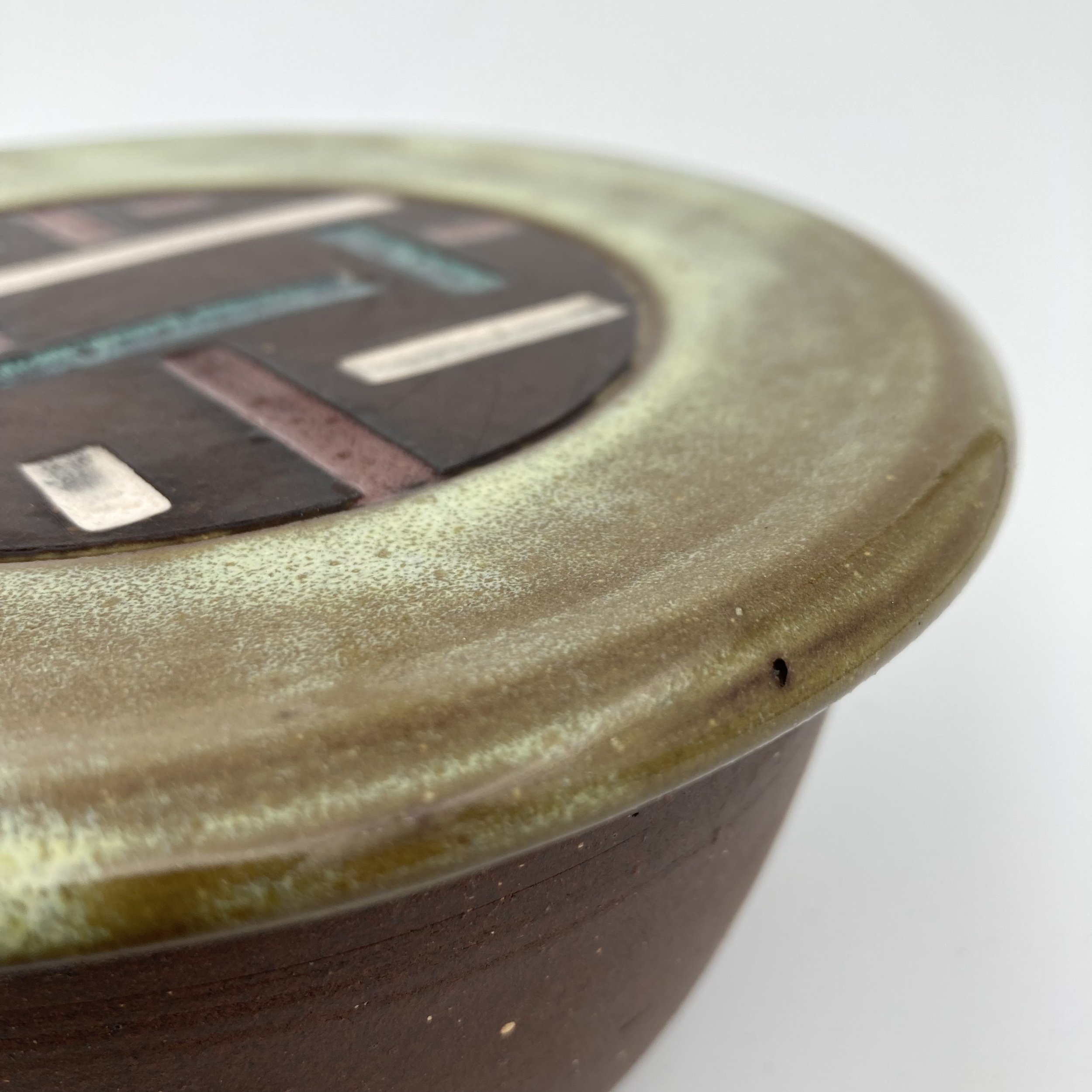




Before there were Chinese Characters - Bento Bowl
Imagine a Bento Bowl (a food container) designed with a natural moisture seal design without plastic or silicone, a full sustainable application in a food container. Furthermore, these bento bowls are precisionly hand crafted by a trained potter. The lid is sealed into the bowl by placing a bead of water on the inner groove of the bowl. Once the lid is placed on the ringed bowl, the bead of water creates a natural moisture seal. You will know it is lightly vacuum sealed as you feel a suction as you try to lift the lid off the bowl. This ingenious, yet simple technique has been used in many pottery traditions such as the ceramic used to ferment German Sauerkraut and Korean Kimchi. We utilize the same principle that potters invented hundreds of years ago, but reduced in size to fit a personal
bento bowl.
We elevate the enjoyment of a homemade meal when stored and eaten from a handmade food container. To bring depth to the meal, we choose the natural earth tones and textures reminiscent of a picnic or a weekend trip. For added flair in securing the lid to the bowl, we utilize another ancient technique of wrapping and tying the bento bowl in a “furoshiki”, a large Japanese square cloth that can double as a napkin or placemat. You might decide to take it with you to a restaurant to take home food without using the wasteful styrofoam or plastic container.
It’s a truly modern lifestyle trend setter item you should consider adding to your enhanced culinary experience.
It holds 15~20 fluid oz.
Approximately 3”(h) x 6”(diameter)
Food safe, microwave/dishwasher friendly.
Before there were Chinese Characters - Bento Bowl
Imagine a Bento Bowl (a food container) designed with a natural moisture seal design without plastic or silicone, a full sustainable application in a food container. Furthermore, these bento bowls are precisionly hand crafted by a trained potter. The lid is sealed into the bowl by placing a bead of water on the inner groove of the bowl. Once the lid is placed on the ringed bowl, the bead of water creates a natural moisture seal. You will know it is lightly vacuum sealed as you feel a suction as you try to lift the lid off the bowl. This ingenious, yet simple technique has been used in many pottery traditions such as the ceramic used to ferment German Sauerkraut and Korean Kimchi. We utilize the same principle that potters invented hundreds of years ago, but reduced in size to fit a personal
bento bowl.
We elevate the enjoyment of a homemade meal when stored and eaten from a handmade food container. To bring depth to the meal, we choose the natural earth tones and textures reminiscent of a picnic or a weekend trip. For added flair in securing the lid to the bowl, we utilize another ancient technique of wrapping and tying the bento bowl in a “furoshiki”, a large Japanese square cloth that can double as a napkin or placemat. You might decide to take it with you to a restaurant to take home food without using the wasteful styrofoam or plastic container.
It’s a truly modern lifestyle trend setter item you should consider adding to your enhanced culinary experience.
It holds 15~20 fluid oz.
Approximately 3”(h) x 6”(diameter)
Food safe, microwave/dishwasher friendly.